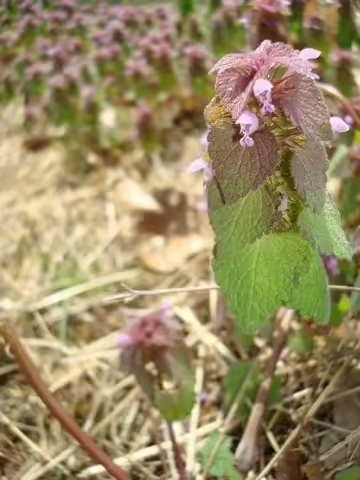Ever notice how beautiful henbit and purple deadnettle bloom can be when viewed from afar, though much less so when viewed up close in your own garden? Both are classified as winter annual weeds, meaning they complete their life cycle in one year, but instead of germinating in the early spring when your gardening reserves for weeding are at a high, they tend to germinate in late summer to early fall when you just want to be done with the gardening scene.
They survive through the winter, many times by growing into small rosettes low to the ground, going unnoticed until the following spring when it becomes a race to get control before they go to seed. That is why now is a good time to take advantage of any mild or unseasonably warm days to get a head start on weeding winter annuals out of your garden. They are green and have grown to a size easy to see against an otherwise dull background. Henbit, purple deadnettle, common chickweed and the weedy speedwells are all easy to weed, meaning they are easy to get ahold of and not all that well anchored. That is not the case with other winter annuals like prickly lettuce and yellow rocket. They are either difficult to get ahold of or the leaves tear off instead of the plant coming loose. With these, a trusty garden soil knifer or a traditional dandelion weeder are useful tools to have on hand.

